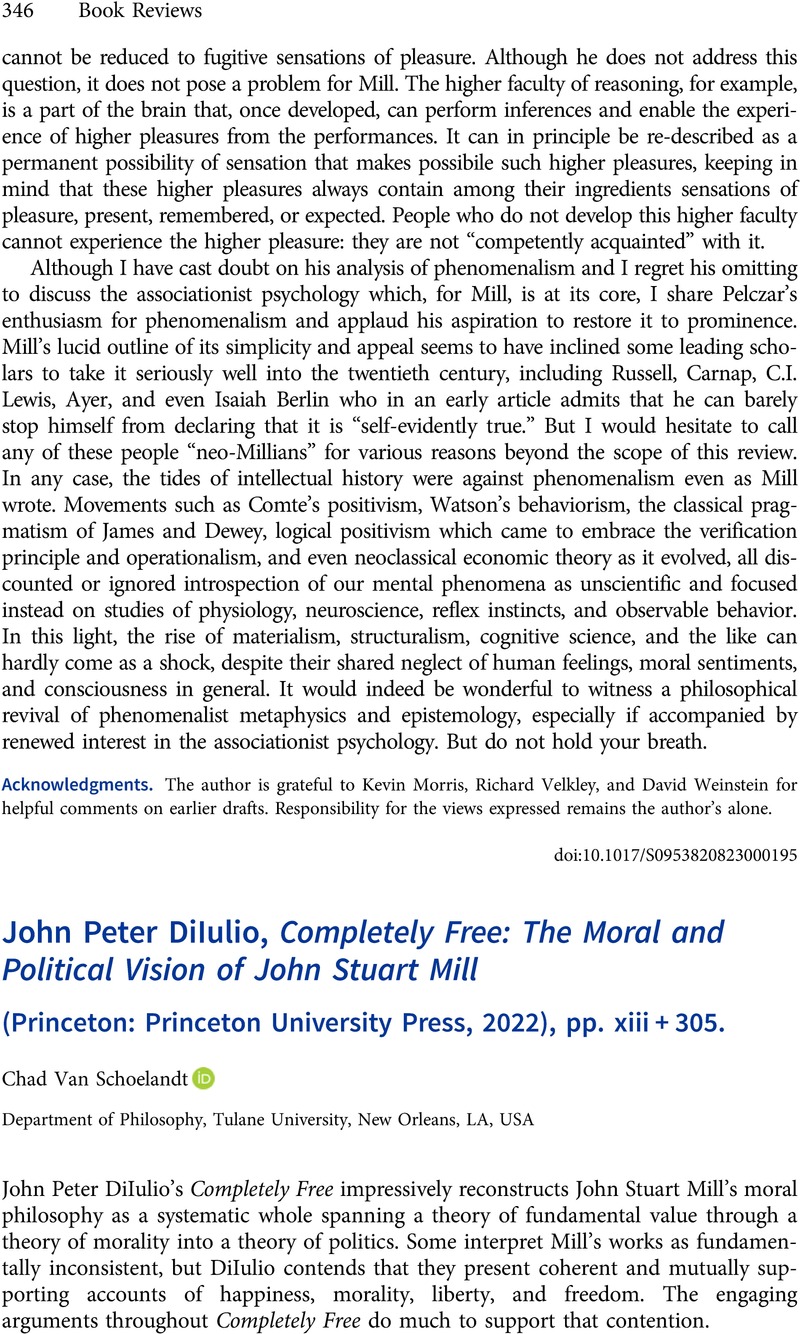No CrossRef data available.
John Peter DiIulio, Completely Free: The Moral and Political Vision of John Stuart Mill (Princeton: Princeton University Press, 2022), pp. xiii + 305.
Review products
John Peter DiIulio, Completely Free: The Moral and Political Vision of John Stuart Mill (Princeton: Princeton University Press, 2022), pp. xiii + 305.
Published online by Cambridge University Press: 11 September 2023
Abstract
An abstract is not available for this content so a preview has been provided. Please use the Get access link above for information on how to access this content.

- Type
- Book Reviews
- Information
- Copyright
- Copyright © The Author(s), 2023. Published by Cambridge University Press



